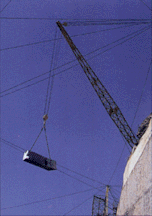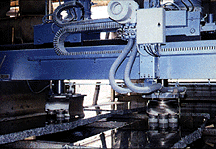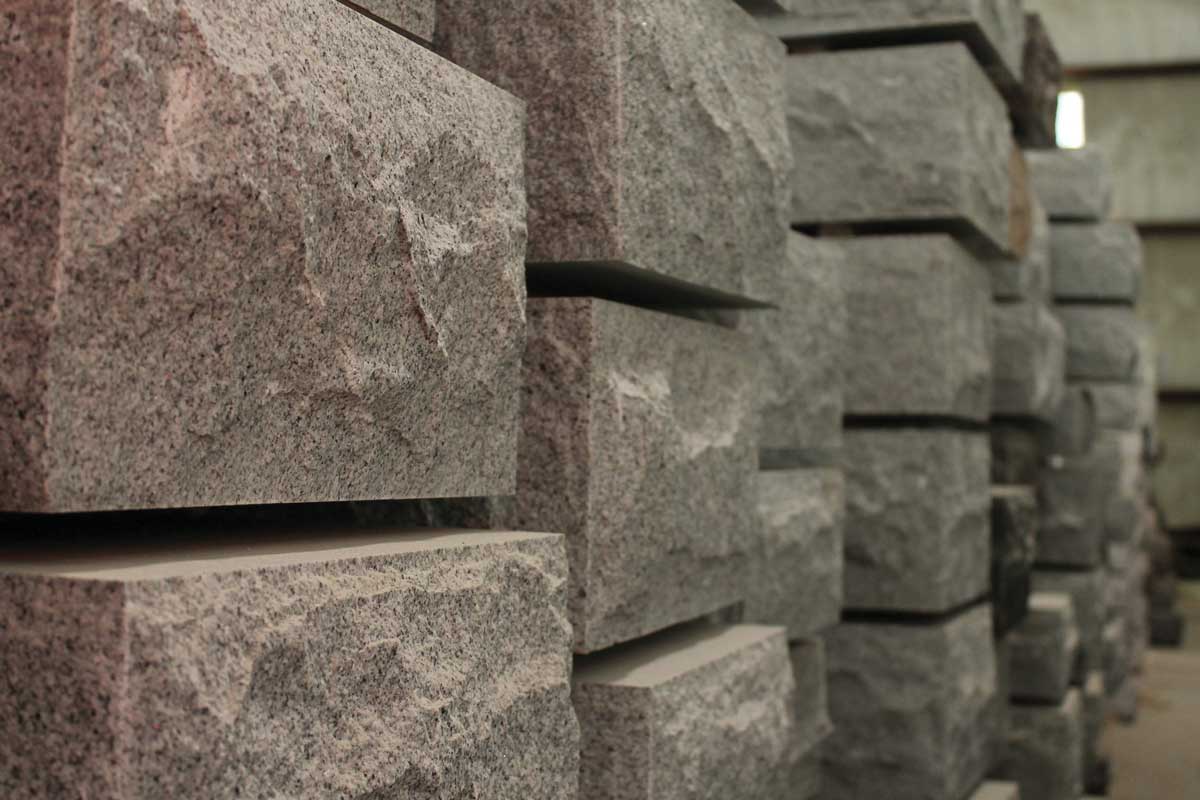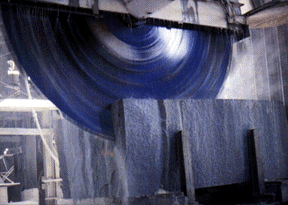Memorial Manufacturing
Quarrying
Granite is taken from quarries using a variety of tools and personnel. Often these blocks are as large as 10 feet long, 5 feet wide, 2-4 feet high and can weigh over 15 tons.
Granite is cut from the "bed" of the quarry with a jet piercing machine that produces a flame burning at approximately 3,000 degrees Fahrenheit. This high-velocity flame, created by burning oxygen and fuel oil, is directed at the granite to be removed, causing a continuous flaking action. As the flame nozzle is moved up and down, a channel is created around large sections in the quarry.
In some quarries, diamond wire saws are used. A long loop of small steel cable, impregnated with industrial diamond segments, cuts the sections free from the bed of the quarry. After a section has been completely wire sawed or channeled by the burner, it is separated from the bottom by explosives (watch video of a detonation).
Likewise, when high-speed drills are used, rows of drilled holes are loaded with explosives. The explosives are detonated to free the sections of granite on all sides and on the bottom.
 The large sections are then broken into workable sizes by wedging. In this process, steel wedges are driven manually into holes previously drilled along the desired line of cleavage. The sections are readily forced apart and cross-wedged into rectangular blocks. Large cranes, or derricks, lift these blocks to the quarry's rim. Requirements for monumental granite are exacting, and only about 50 percent of the granite removed from the quarries finds its way into finished monuments. The remainder is consigned to commercial applications such as street curbing and gravel, or is sent to "grout piles" as waste products.
The large sections are then broken into workable sizes by wedging. In this process, steel wedges are driven manually into holes previously drilled along the desired line of cleavage. The sections are readily forced apart and cross-wedged into rectangular blocks. Large cranes, or derricks, lift these blocks to the quarry's rim. Requirements for monumental granite are exacting, and only about 50 percent of the granite removed from the quarries finds its way into finished monuments. The remainder is consigned to commercial applications such as street curbing and gravel, or is sent to "grout piles" as waste products.
Blocks are delivered to finishing plants, usually via tractor trailer, where large diamond saws (watch video of a diamond saw), some with blades up to 14 feet in diameter, cut through the rough block of granite.
Once the blocks are sawed into slabs, smaller saws may be used to further define their size and shape. Often slabs measuring eight to ten feet in length and six to eight inches in thickness are fed into "guillotines" that effortlessly breaks the granite slabs into sizes needed for monuments and markers.
 |
Pictured left is an automatic polisher applying a mirror-like finish to the granite. |
| Pictured right is a large, diamond-tipped saw cutting through a granite block. |
|
Computerized diamond wire saws offer flexibility in shaping the granite and are sometimes used to cut the slabs into unusual shapes.
Large polishing mills use a variety of grinding and buffing pads and abrasives that are applied systematically to create a mirror-like finish.
Sandblasters and other stone crafters use hammers, razor-sharp carbide tipped chisels, pneumatic tools, and sandblasting equipment to further carve, shape and define each individual monument.
For more information on granite manufacturing and memorialization, please contact the Elberton Granite Association for a copy of the free publication "Personal Monuments: Yesterday, Today, Tomorrow, Evermore".



